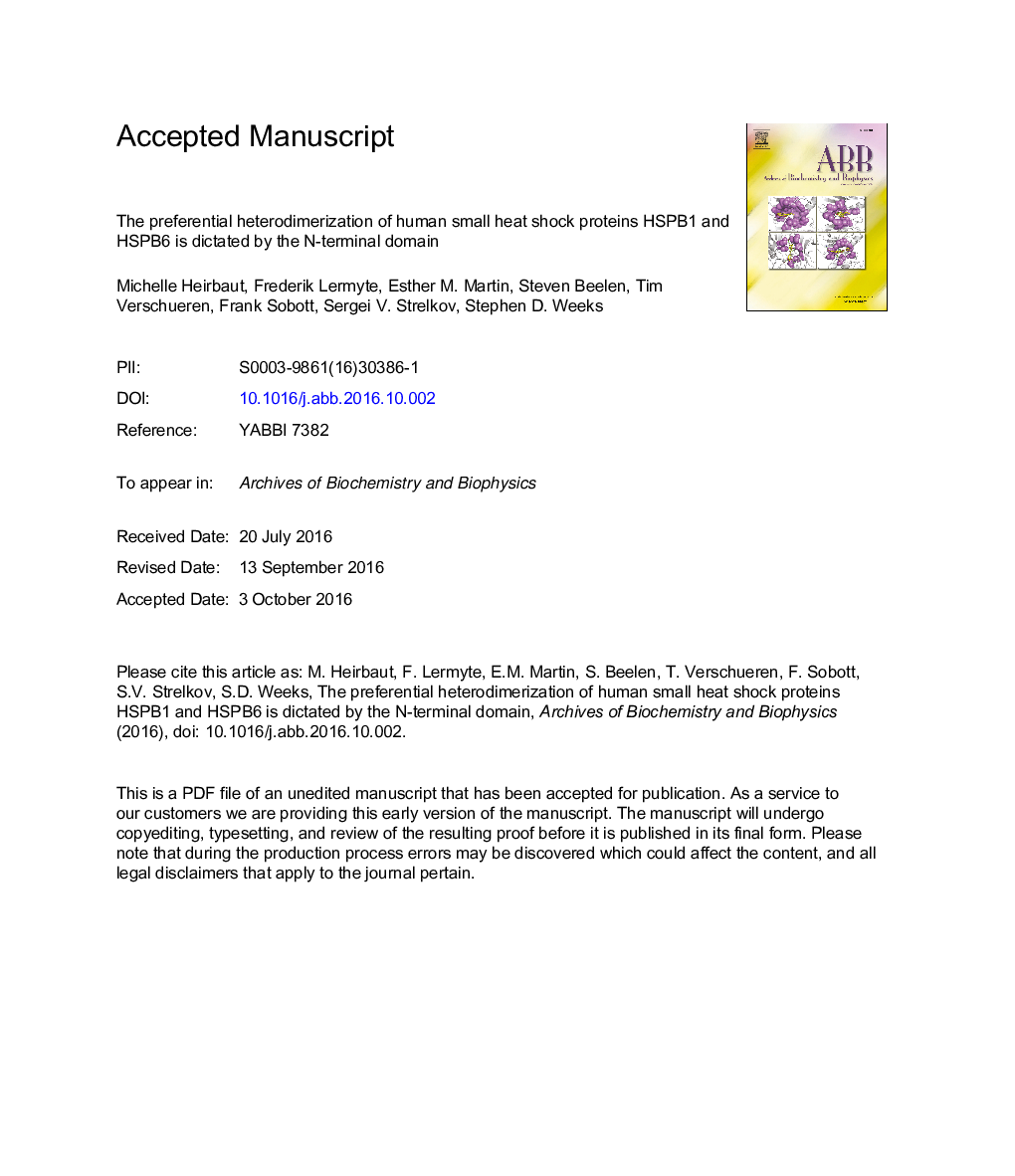| Article ID | Journal | Published Year | Pages | File Type |
|---|---|---|---|---|
| 5504479 | Archives of Biochemistry and Biophysics | 2016 | 28 Pages |
Abstract
Small heat shock proteins are ATP-independent molecular chaperones. Their function is to bind partially unfolded proteins under stress conditions. In vivo, members of this chaperone family are known to preferentially assemble together forming large, polydisperse heterooligomers. The exact molecular mechanisms that drive specific heteroassociation are currently unknown. Here we study the oligomers formed between human HSPB1 and HSPB6. Using small-angle X-ray scattering we could characterize two distinct heterooligomeric species present in solution. By employing native mass spectrometry we show that such assemblies are formed purely from heterodimeric building blocks, in line with earlier cross-linking studies. Crucially, a detailed analysis of truncation variants reveals that the preferential association between these two sHSPs is solely mediated by their disordered N-terminal domains.
Keywords
SECSAXSHEWLHSP20HSP27NTDACDChaperoneCTDDTTSUMOSDS-PAGESodium dodecyl sulfate polyacrylamide gel electrophoresisSize-exclusion chromatographyhen egg white lysozymeC-terminal domainN-terminal domainα-Crystallin domaindithiothreitolNative mass spectrometryMass spectrometryYeast alcohol dehydrogenaseSmall-angle X-ray scatteringSmall heat shock proteinsyADH
Related Topics
Life Sciences
Biochemistry, Genetics and Molecular Biology
Biochemistry
Authors
Michelle Heirbaut, Frederik Lermyte, Esther M. Martin, Steven Beelen, Tim Verschueren, Frank Sobott, Sergei V. Strelkov, Stephen D. Weeks,
